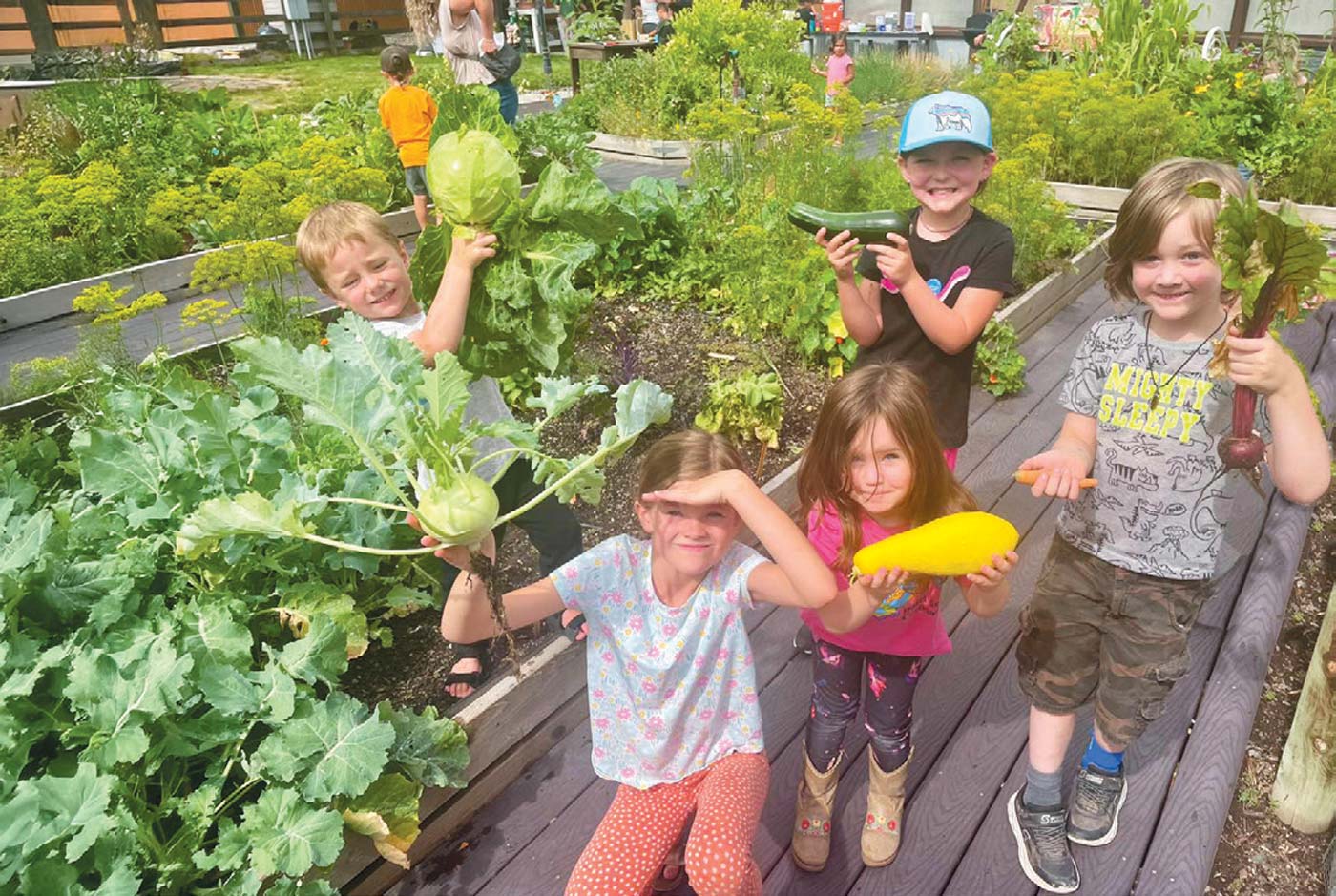Lilacs are a beautiful staple in the springtime awakening, one that graces Montana every year. Much ado can be made over the lovely blooms that captivate yards and gardens with their heady perfume, conjuring up nostalgic memories of grandmas everywhere. One only has to see the little leaf buds during the gray days between winter and spring to feel the excitement of the imminent change in seasons. The call to observe our environment and pay attention to its gentle language might be one of our most instinctual practices.
The so-called “Father of Scientific Phenology” might attest to that. Joseph Caprio [1923–2011], a nationally renowned climatologist and professor emeritus of agricultural meteorology at MSU, created the first phenological monitoring database in the United States in the 1950s right here in Bozeman. Specimen of choice? The common lilac.
Phenology is the study of seasonal events, timing, and patterns in the natural world. This might include the robin’s return in spring or leaves’ changing colors in the fall. Today, cultures around the world still enlist the beautiful and simple art of noticing and recording. Paying attention to our environment tethers us to the world around us, creating a rhythm to our lives.
In an effort to record seasonal weather patterns to improve predictions of crop yields, Caprio collaborated with agricultural experiment stations to monitor the lilac’s various seasonal markers. Due to the lilac’s sheer abundance, reliability, and appeal in the Rocky Mountain West, these hardy warriors are often the first indicators of the coming spring.
The common lilac originated in Eastern Europe and made its way over to North America with colonists in the 1700s, arriving in Montana in the 1800s. It’s long played key roles in magic, mythology, folklore, and medicine.
Tracking bud break, leaf out, first bloom, and open flower, Caprio recognized the value of recording these events. What began in 1956 as a grassroots effort quickly spread through 12 Western states with 2,500 volunteer
observers. And that early research led to today’s nationwide data-collection organization: the USA National Phenology Network.
Influential researcher and phenoclimatologist Mark D. Schwartz, distinguished professor of geography at the University of Wisconsin-Milwaukee, birthed the next generation of data collection in the 1980s.
“Without the lilacs, without that [historical] data that was available to build these models, I wouldn’t have anything to be able to look at,” Schwartz says. “It’s the only long-term plant data set we have in the U.S. … The legacy data was critical in catalyzing continental scale land-based phenological observation.” Studying how these seasonal events relate to other ecological life, researchers are able to explore climate change, pest management, allergens, and spring-onset predictions.
Observing our environment and creating relationships between seasonal events is in every living organism. Is it possible the delight in observing life around us is, in fact, innate? As lilac buds bloom into memory this season, we have a chance to not only witness the return of life, but to participate in the awakening itself; to open our senses to the stirring of the Earth, and notice all that is alive.
Volunteers can participate in USA National Phenology Network’s Nature’s Notebook, a collective recording app for seasonal observations and data. To learn more visit usanpn.org.
LILAC IN THE KITCHEN
Lilac blooms are notoriously fleeting. If you have the opportunity to harvest fresh blossoms, try these simple recipes so you can delight in lilac throughout the season.
TEA, FRESH OR DRIED
Lilac blossoms can be steeped fresh with hot water or dried and saved for use throughout the year. To dry: Gather lilac stems and gently shake out any bugs or debris. Gently wash if necessary. Lay flat in a single layer on a muslin cloth or tea towel spread on a cookie sheet or pan. Store in a cool, dark place until blooms are completely dry, a couple weeks. Store in an airtight container in the dark.
BATH SOAK
Mix dried lilac blossoms with Epsom salts, adding any additional herbs and pure essential oils. A great combination is rose hip, chamomile, and lilac.
HONEY
Pour honey over clean lilac blossoms, cover, and let sit for a few days to a few weeks. Spoon out the blossoms or leave them in. Enjoy as an infused treat in drinks.
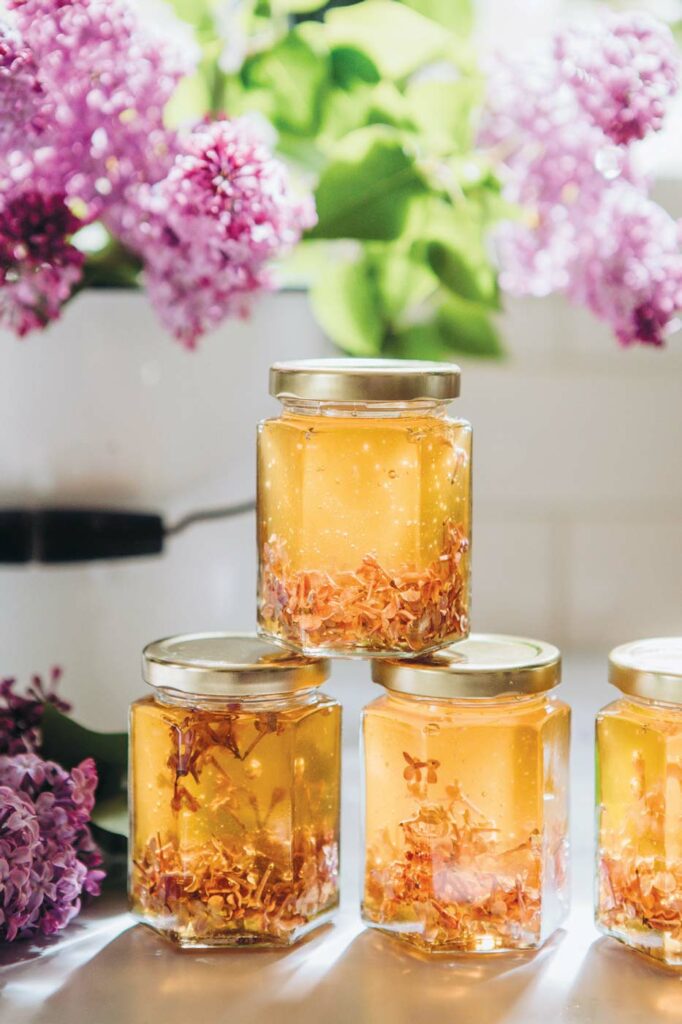
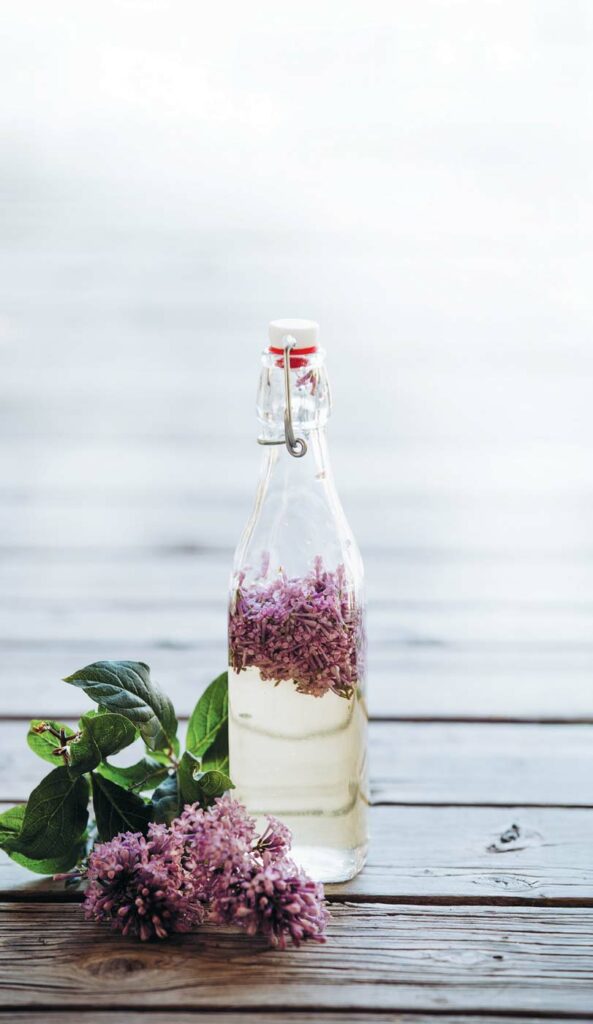
SIMPLE SYRUP
Boil 1 part sugar to 1 part water for several minutes. Once sugar is dissolved, remove from heat and add 2 parts clean lilac blossoms. Let sit in warm syrup for half an hour. Strain and store in the refrigerator. Works great for lilac lemonade, lilac-infused cocktails, or lilac sorbet.
VINEGAR
Pour 1 part rice vinegar over 1 part clean lilac blossoms. Cover and refrigerate for several days, up to a week, then strain out the blossoms. Store in the refrigerator for up to a month and enjoy as a salad dressing.
SORBET
Prepare simple syrup, above. Once the syrup cooled, add ¼ part fresh lemon juice. This will turn the syrup a beautiful pastel pink. Add to an ice cream maker and churn until frozen and smooth. Pack into an airtight container and freeze for up to one month.
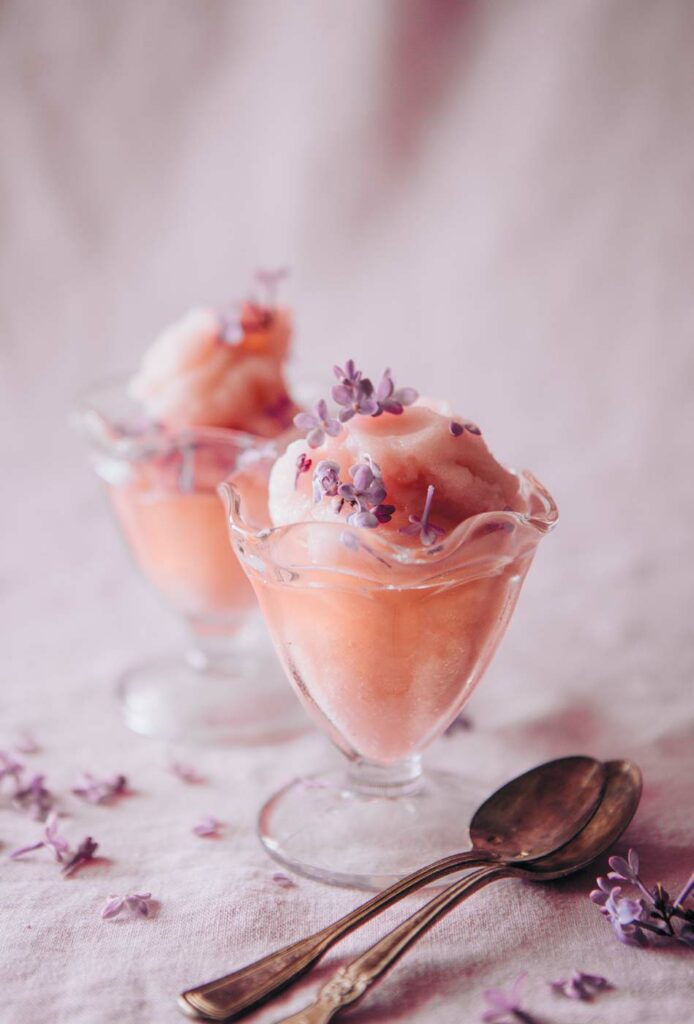
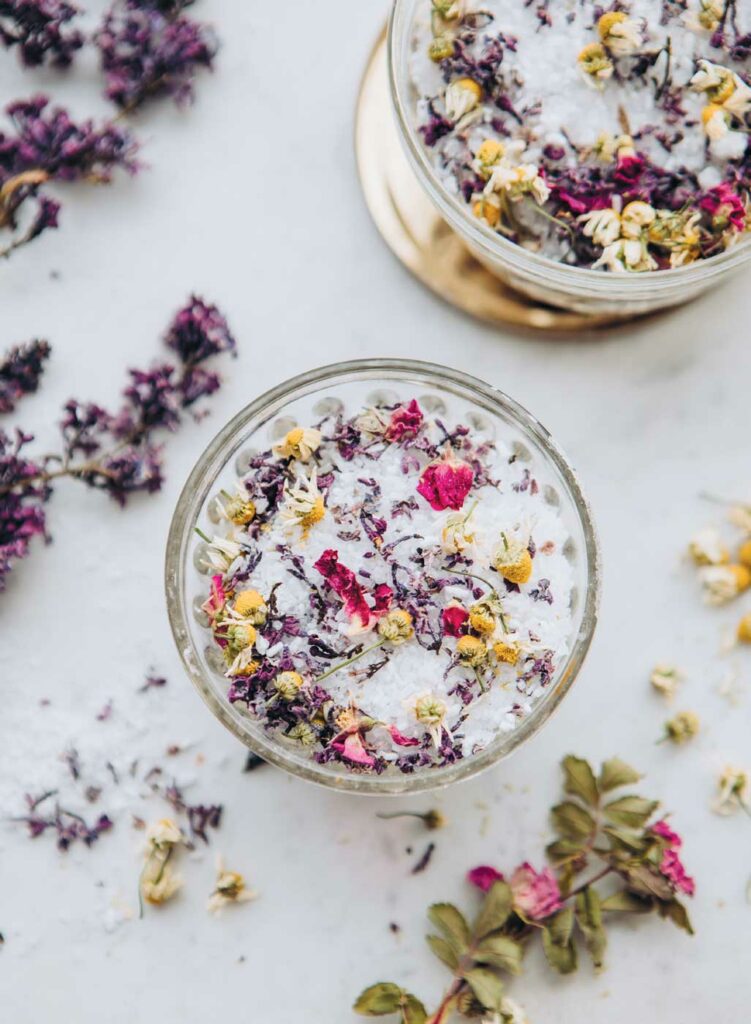
SUGAR
Start with dry, freshly cut blossoms. Remove flowers from stems. Layer sugar in a jar with a sprinkling of blossoms, alternating between the two to your preferred consistency. Cover the jar with a lid and store in the dark. Shake the sugar daily, as it will absorb the blossoms’ moisture. After several days, you may use a sieve to remove the blossoms, as they will brown and wither. Enjoy for baking, topping treats, and adding to beverages.
ENFLEURAGE
Capturing lilac essence is a historic art that can be done at home, though it takes some effort. Start at the beginning of the season, clipping the most fragrant blooms. Remove blossoms from their stems. Line a pan thickly with unscented oil or fat that solidifies, like coconut oil. Press blossoms into the oil in a single layer; cover with plastic wrap, parchment paper, or another pan; and let it sit for one to two days. Remove spent blossoms and add a fresh layer of flowers. Continue every day or two until the scent is to your liking. Store oil in a container in a cool dark place and use as a body oil.


